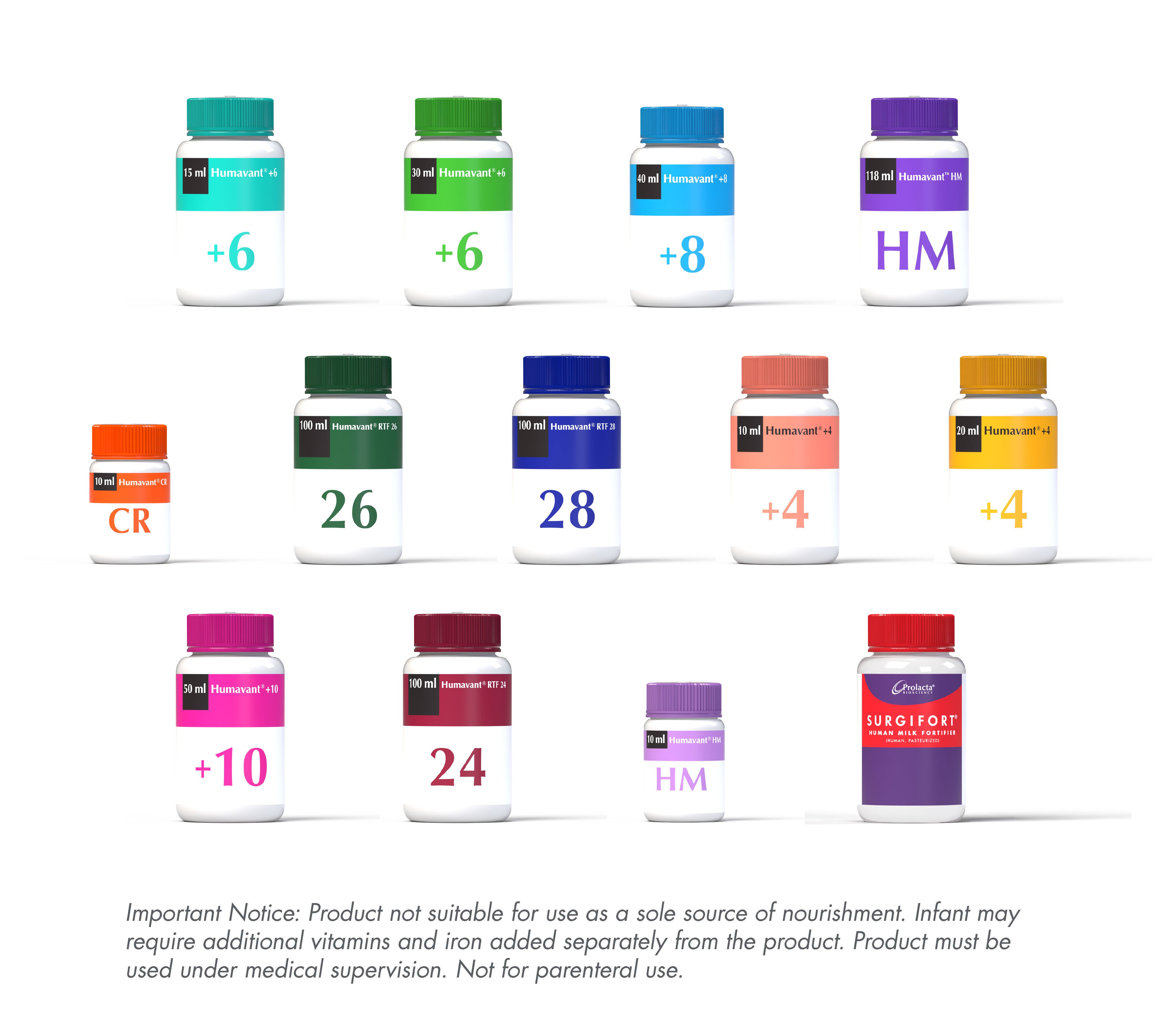Unlock the power of human milk

Optimal preterm infant nutrition products
Humavant ® +6 HMF (15 ml) Human Milk-based Fortifier (Human, pasteurised)
Humavant® +6 HMF (30 ml) Human Milk-based Fortifier (Human, pasteurised)
Humavant® +8 HMF (40 ml) Human Milk-based Fortifier (Human, pasteurised)
Humavant® RTF 26 (100 ml) Human Milk-based Fortifier, Premature Infant Formula
Humavant® RTF 28 (100 ml) Human Milk-based Fortifier, Premature Infant Formula
Humavant® CR (10 ml) Human Milk-based Fortifier (Human, pasteurised)
Additional preterm infant nutrition products for feeding flexibility
Humavant ® +4 HMF (10 ml) Human Milk-based Fortifier (Human, pasteurised)
Humavant ® +4 HMF (20 ml) Human Milk-based Fortifier (Human, pasteurised)
Humavant ® +10 HMF (50 ml) Human Milk-based Fortifier (Human, pasteurised)
Humavant HM (118ml) Human Milk-based Fortifier (Human, pasteurised)
Humavant HM (10ml) Human Milk-based Fortifier (Human, pasteurised)
Term infant nutrition products
Surgifort (100mL ) Human Milk-based Fortifier, Term Infant Formula (Human, pasteurised)
